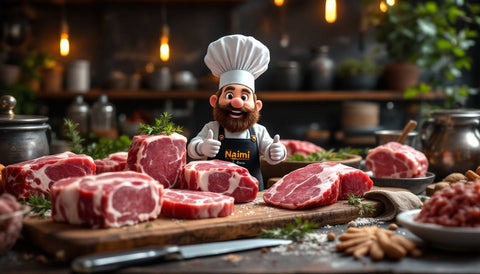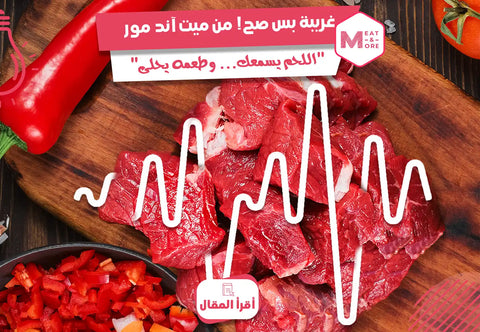🥩❓ What's the difference between cooking steak and chicken, and which is safer?
the introduction:
Bacteria in meat are one of the biggest threats to human health and food safety, especially if not handled properly.
Although meat is a rich source of protein and nutrients, it is a fertile environment for the growth of various types of bacteria, which can lead to serious cases of food poisoning.
But strangely, some types of meat can be eaten at different cooking degrees – such as beef or lamb – while others, such as chicken, must be cooked completely without exception.
In this article, we highlight the types of bacteria common in meat, explain why meat is cooked differently depending on its type, and explain the relationship between temperature and food safety, helping you make more informed and safe cooking decisions.
🧫 Types of bacteria in meat and the different ways they spread:
- Salmonella: Common in poultry meat, it may be present within the tissues and not just on the surface.
- E. coli: It is most commonly found in beef and veal, and some strains can cause severe food poisoning.
- Campylobacter: It affects chicken and duck meat, and is often associated with improper cooking and refrigeration.
- Listeria: Processed meats are dangerous for pregnant women and the elderly.
💡 The nature of bacterial spread varies: red meat often carries bacteria on the surface, while it may spread within poultry tissues.
🧼 Safe ways to handle raw meat:
- Store at 4°C for fresh meat, and -18°C for frozen meat.
- Prevent cross-contamination by using separate tools.
- Wash your hands well before and after touching meat.
- Thaw meat in the refrigerator or microwave only.
- Do not leave meat at room temperature for long periods.
Meat cooking degrees: types, benefits, and risks
Red meat:
| settlement degree | internal temperature | Shape and taste | Notes |
|---|---|---|---|
| Rare | 52–55°C | Red inside, juicy | Safe if the surface is well browned. |
| Medium | 60–65°C | Pink inside, perfect balance | Most suitable for most people |
| Well-Done | 70°C+ | Fully cooked, intense flavor | Safest in terms of bacteria |
Chicken:
Chicken does not tolerate undercooking. It must be cooked to an internal temperature of at least 75°C .
🔁 Can bacteria return after cooking?
- Yes, if the cooked meat is contaminated with unclean utensils.
- Or when leaving food at room temperature for more than two hours.
- Or when reheated at an insufficient temperature.
✅ Ensure the safety of cooked meat:
- Use an indoor thermometer.
- Check the color of the internal juice.
- Store cooked food within 2 hours of cooking.
- Reheat food to 70°C or higher.
📝 Summary:
Each type of meat requires special handling to ensure its safety. Understanding the nature of meat and its cooking methods is the first step toward a safe meal.
🟩 At Meat & More
- We provide selected meats from trusted sources.
- We prepare poultry to be fully cooked safely.
- We offer red meat of a quality suitable for all degrees of cooking.
Understanding the type of meat… is the first step towards a healthy and safe meal.
📚 Read also:








Comments (0)
There are no comments for this article. Be the first one to leave a message!